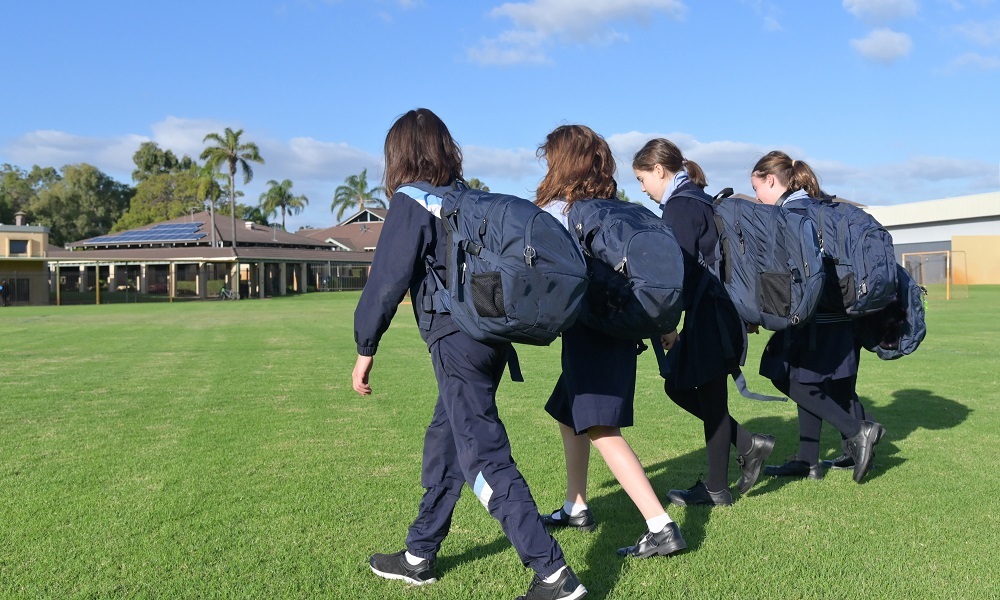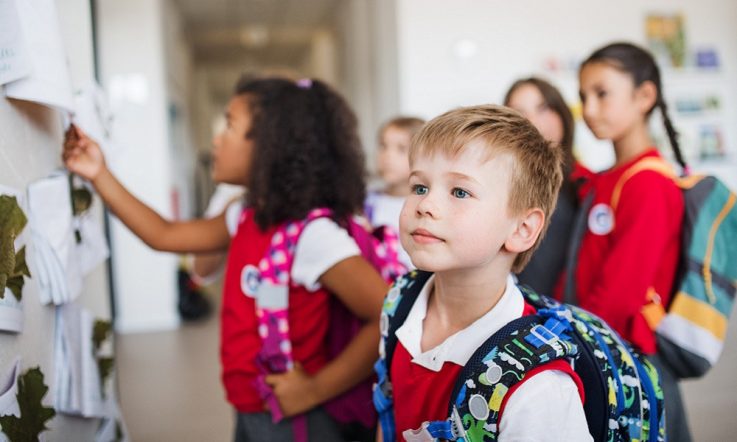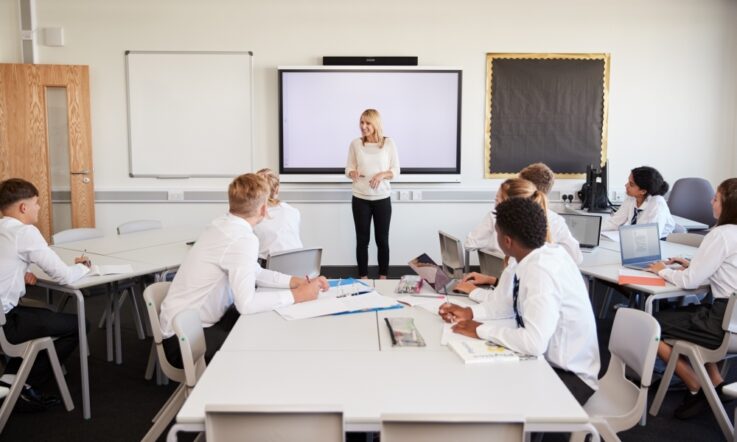The transition between primary and secondary school is known to be a challenging time for students. Listening to their feelings and concerns, and using this information to improve transition programs is one way that schools and educators can support students through the process.
A new report from the Australian Council for Educational Research (ACER) details the results from forums held with hundreds of students across Australia. It reveals the specific challenges students are concerned about, and how they feel about the transition process.
The research found that, when moving from primary to secondary school, students are most concerned about three main issues: academics (difficulty of the work and expectations), high school systems, and social challenges. And, while they believe schools could make adjustments to improve their experience, they want to be able to attack these problems themselves.
What Australian students say about transition to secondary school: Final report was prepared by researchers at ACER for Life Education Australia, and forms Stage 1 of Life Education’s Being Healthy Being Active project. It shares details of a literature review and environmental scan, and forums that were held with 444 students from 15 schools in Years 6, 7 and 8. The year level range targeted in the forums means the perspectives of students both pre- and post-transition are included in the data.
‘The literature review and environmental scan indicated gaps and overlaps in existing knowledge and programs related to school transition. As noted in that section, existing knowledge and understanding is not always immediately transferable to a particular classroom context, resources are not always developed from a positive perspective – as contrasting with a “deficit” perspective –and student voice is generally not evident in resource development. Subsequent to the literature review and environmental scan, the student forums were intentionally designed to help address these gaps in knowledge and transferability,’ the report explains.
Students involved in the forums reported they had participated in a range of transition activities, including: visiting the secondary school in their pre-transition year; formal tutoring and explicit teaching in primary to prepare academically; and, practising organisational skills such as getting up earlier and transport options. Some students actively sought to make new friends pre- or during transition, and others talked about their new school with friends and family members who were already attending.
Student perceptions and feelings about transition
In the forums, students were asked to draw and label an emoji to describe how they feel or felt about transitioning to the first year of high school. The most commonly depicted emotion was joy (31%), followed by fear (25%). Uncertainty (13%), contentment (12%) and sadness (8%) were also portrayed.
After drawing and labelling their emoji, students were asked to consider what had contributed to those feelings. ‘Even though the discussion was centred on school transition, explanations could come from school-related or non-school related domains. Most students’ reasons did relate directly to either the school or the school-change process,’ the researchers explain.
The most frequently cited reasons were academics (44%), high school systems (30%), and social challenges (21%). These same three reasons were also cited as the biggest challenges students expected to, or did, face during their transition.
Students also mentioned having a fresh start (19%); being confident/informed (14%); uncertainty (11%); positives around growing up (6%); non-school related contributions (5%); and general positive feelings (4%) also contributed to their feelings and emotions.
Academic expectations
Almost half (49%) of students in Years 6, 7, and 8 say academic schoolwork was or would be their biggest challenge to face during the transition into their first year of high school. In particular, they said they held concerns about the difficulty level and amount of classroom work, homework, and assessment tasks, as well as the increased expectations from parents and teachers.
For students who cited academic expectations as contributing to their feelings about transition, most said this was in relation to navigating the new academic environment (for example, more subject opportunities and different extracurricular activities) and the increased academic expectations and workloads. The report includes some quotes shared by students:
Just getting used to all the homework is really hard (especially when you forget to bring your books home)
Science is better at high school, more complex tasks to do
The researchers say these explanations were aligned almost equally to both positive and challenging feelings – for example, approximately half of students who mentioned the increased academic expectations were excited about tackling more difficult work. The other half of students, though, were worried about whether they’d be able to manage these increased workloads and expectations. Further, they note that students in schools with a high ICSEA (Index of Community Socio-Educational Advantage) value were significantly more likely to identify academics as a reason for their emotional response. ICSEA values give insight to the socioeconomic backgrounds of students, where a higher figure indicates a higher level of educational advantage.
High school systems
The next most pressing challenge for students was managing the school environment. ‘This included challenges such as students finding their way around a larger or more complex school, and getting used to the new cultural and practical expectations of being in a secondary school environment,’ the report says, adding ‘Many students commented on the concept of a different school culture, both at the macro-level in terms of school expectations, and at the micro-level in terms of individual interactions.’
For students who cited high school systems as their explanation for their overall emotions towards the transition process, most said this was similarly in relation to getting used to a new or larger school environment. They also mentioned adjusting to uniform requirements, and learning how to follow a timetable and move independently between classrooms. For example, some students had this to say:
It makes me nervous, knowing that I might get lost…
I feel excited going to high school because I am looking forward to being in a different learning environment
Social challenges
The forums revealed that social challenges were more commonly associated with challenging emotions like fear, sadness and uncertainty. Students mentioned their worry about fitting in with peers and the general school culture, missing friends from primary school, and shared some concerns around possible bullying and acknowledgement that making new friends is difficult.
‘Students at combined schools and students in remote areas were significantly less likely to identify social challenges as a reason for their emotional response,’ the report notes. This is how some students expressed their concerns:
Shy because have to make new friends
I feel nervous because there will be new people
Beyond these three main challenges, others mentioned by students included: self-management (such as getting to school by themselves and self-discipline); bullying (including actual and perceived); personal/student-specific challenge (for example, challenges related to a specific learning difficulty and how that might affect their experience at high school); and general change.
Making the transition easier
The researchers asked students how these transition-related challenges could be solved or made easier for future students. From their responses, two themes where students said schools could provide support were identified: managing school work, and managing the school environment.
For example, students said if teachers had eased them in to work more; helped with time management by providing rosters to help know when assignments are due; and provided more spare time to complete work, this could help them manage their school work better.
To help them navigate the new school environment, students suggested schools ‘make rules in all classes similar. [For example] being able to sit anywhere because we have a lot of seating plans and it's hard to remember for every class’. The use of school buddies was also mentioned, and one student said: ‘… maybe some high school students could visit primary schools and the Year 6 students could ask questions about high school’.
‘While many suggestions were at the school level in terms of how schools or teachers could adjust systems to improve the transition experience, students particularly emphasised their wish to solve problems themselves and be their own agents of change and improvement,’ the researchers note.
Their report includes five recommendations for informing Life Education’s transition resources, which will be Stage 3 and 4 of the Being Healthy Being Active project:
- Resources are tailored towards different time points in the pre- and post-transition school years
- Resources assist students in managing the ‘unknown’ elements in life
- Resources build upon students’ emerging sense of responsibility and agency
- Resources are centred on existing topics of importance during transition
- Resource development leverages the learning preferences identified by students (Sniedze-Gregory et al., 2021).
References
Sniedze-Gregory, S., Felgate, R., O’Grady, E., Buckley, S., & Lietz, P. (2021). What Australian students say about transition to secondary school. Final report. Australian Council for Educational Research. https://doi.org/10.37517/978-1-74286-644-4
Think about the transition programs in place in your school. When was the last time they were reviewed? Does student voice inform your programs? How could student voice be used to help target support to your students and improve the experience for them?



